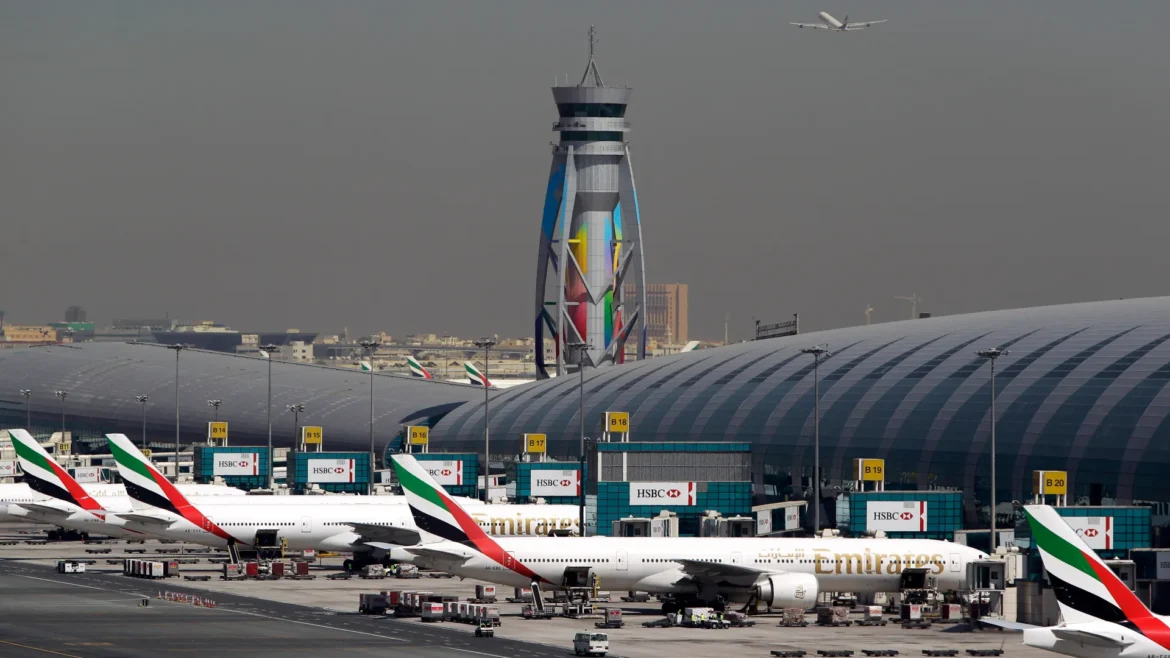By Desmond Nleya
Dubai International Airport (DXB) is expected to reach its maximum capacity of 115 million passengers by 2031, paving the way for a full transition to the under-construction Al Maktoum International Airport (DWC) by 2032, according to Dubai Airports CEO Paul Griffiths.
Griffiths revealed that DXB is already operating at near-maximum levels and will rely on DWC’s vast new infrastructure to handle an anticipated 124 million passengers annually by 2032.
“By the time we get to 2031, DXB will be at about 114 to 115 million, which is probably the maximum capacity that we’re likely to be able to get from DXB. Then we make the full transition to DWC in 2032,” Griffiths told Gulf News on the sidelines of the Dubai Airshow 2025 press conference.
Al Maktoum Airport: A New Global Hub
Once fully completed, the new Al Maktoum International Airport will feature a state-of-the-art terminal capable of handling 260 million passengers per year, eventually absorbing all DXB operations within the next decade.
To ease congestion at DXB, flydubai will be among the first carriers to move to the existing DWC terminal as DXB reaches capacity limits.
“As we run out of slots at DXB, which obviously at some stage over the next few years we will, there will be some moves of airlines to DWC. Obviously, flydubai, I think, will be one of the first movers, and we’re working to put facilities in place that will enable that move,” Griffiths explained.
The initial move will utilise the current passenger terminal and single runway at DWC, rather than waiting for the completion of the larger new complex.
Squeezing the Last Capacity Out of DXB
Before the full transition in 2032, Dubai Airports is introducing several interim measures to maximise DXB’s capacity. These include adding more aircraft stands in the midfield and expanding check-in facilities.
“We’re working very hard on new technology which will speed people through the airports,” Griffiths said, highlighting how reduced processing times can both enhance the passenger experience and increase capacity.
He added:
“If we can reduce the time that people are going through all of the processes, then we can increase both speed and convenience to customers, and that gives us a big increase in capacity.”
Technology at the Core of the Transformation
Dubai Airports recently launched its ‘Red Carpet’ corridor, which allows passengers to move through the airport without stopping. Griffiths described its impact as “significant,” noting that the goal is to make every airport process seamless.
“From the time you step out of your car or off the metro, we just want you to go straight through, either to the lounge, or find one of our restaurants, or go into one of our shops,” he said. “The first point at which you stop should be where you want to stop, not where we want you to stop.”
Griffiths shared his broader vision for the industry:
“If I can make one impact on this industry, I want to give people the time back to them so they can spend it at their leisure. Wouldn’t that be lovely?”
From Modest Beginnings to Global Gateway
Over the past 65 years, Dubai International Airport has transformed from a small airstrip in 1960 into one of the world’s busiest and most advanced aviation hubs.
From sand runways and a single terminal to a multi-terminal complex connecting over 270 destinations worldwide, DXB embodies Dubai’s spirit of ambition, innovation, and world-class infrastructure. Today, it stands as a symbol of the city’s rapid rise, welcoming millions of travellers each year.
✅ Key Figures at a Glance
DXB Max Capacity: 115 million passengers by 2031
Full Transition to DWC: Targeted for 2032
DWC Future Capacity: 260 million passengers annually
First Airline to Move: flydubai
New Technology: Red Carpet corridor, AI-powered processing, expanded infrastructure


